Technologies
Scientists and engineers at Los Alamos have developed a variety of advanced technologies that anticipate-affect, detect, and neutralize & mitigate all types of explosive threats.
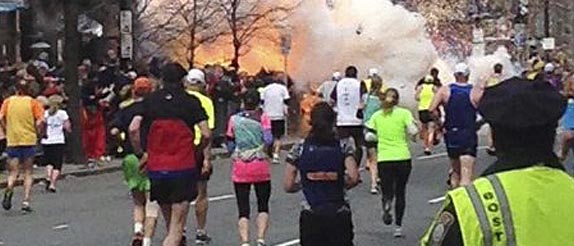
Technologies
Since its inception in 1943, Los Alamos National Laboratory has been a driving force in explosives science.
Scientists and engineers at Los Alamos have developed a variety of advanced technologies that anticipate, detect, and mitigate all types of explosive threats.
Active mm-wave imaging uses detection and imaging at mm-wave – gigahertz (GHz) to terahertz (THz) frequencies – to enable stand-off detection of energetic materials and metals.
The concept exploits a unique attribute of all energetic materials – they all contain stored metastable chemical energy that is released on command using heat, spark, or shock. High power mm-wave sources deposit energy into the explosive and the resulting partial release of metastable chemical energy (e.g., chemical reactions) amplifies signatures, such as thermal, vapor, and mm-wave emissions.
Los Alamos developed ANDE to identify toxic chemicals and chemical-warfare compounds in munitions and sealed containers. Such capabilities support the United Nations Treaty (Chemical Weapons Detection and Verification) beginning with the first Gulf War.
A new variation of ANDE, Safire provides much faster response—less than one second, compared with the previous 40 seconds per item. Safire can be used for portal monitoring and in airports to detect suspect fluids (without opening the container). Safire won an R&D 100 Award in 2014.
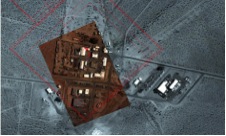
Angel Fire consists of a system of advanced optics and computers. Angel Fire provides broad-area, real-time, and high-resolution surveillance that enables warfighters to search for IEDs.
Angel Fire was deployed in Iraq in to 2008 and was the first device of its king to provide wide-area intelligence, surveillance, and reconnaissance to ground commanders at a tactical level.
Los Alamos is a major contributor to the Department of Homeland Security’s BioWatch bio-surveillance program, which is a nationwide system designed to provide early detection of a biological attack.
Through collector placement modeling, source-term reconstruction modeling, and downwind plume modeling, Los Alamos contributes to the program goal of monitoring and protecting people from biological attack.
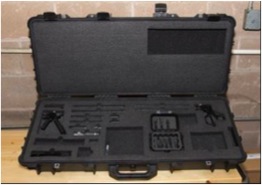
The “Hazardous Device Utility Tools” developed by Los Alamos enable personnel to work on hazardous equipment or devices during a standoff or within a confined space.
These tools enable personnel to cut, manipulate, assemble, and disassemble operations on equipment where a standoff is required as a result of a standoff or because the work occurs within a confined space.

HiWAIS provides real-time, wide-area, persistent surveillance. The HiWAIS technology is a significant step forward in the warfighter support arena.

Los Alamos researchers have harnessed their expertise in bees for plant pathogen detection to train honeybees for applications related to explosives detection.
These researchers previously demonstrated that honeybees can be trained—through Pavlovian associative learning techniques—to respond to specific organic molecules, such as TNT explosives. The technique takes advantage of the bees’ excellent chemosensors on their antennae.
The bees are trained through a process of giving sugar-water “rewards” upon the introduction of the desired scent.
As a result of the training, the bees stick out their tongue (called the proboscis extension reflex) when they encounter the scent again. This reflex is their natural reaction to nectar.
The bees can then be carried around the field or mounted to GPS-linked machinery. Los Alamos scientists have even developed a portable device to hold the bees in a secure environment where their responses can be monitored by a camera.
What conditions lead an individual or group toward committing political violence? Is it possible to accurately forecast who will become radicalized or even estimate when they might resort to violence?
These and similar questions weigh heavily on the minds of security specialists and decision makers around the world.
At Los Alamos National Laboratory, scientists in the International Research and Analysis Group (IAT-1) are merging social, economic, political, cultural, and media data with social science into computer models to better anticipate terrorism and political violence.
IAT-1’s work aids the US Department of Defense and the US Intelligence Community in analyzing the indicators and warnings of political violence.
To further our understanding of violent groups and how they may act, scientists are turning to the computer for help. They are developing computer models to simulate terrorist behavior.
But simulating human behavior is much more difficult than the simulating done in physics research. One method being used for the terrorist problem, a social science problem, is known as agent-based modeling.
Agent-based modeling simulates complex social systems made up of interacting “agents,” either individuals or groups. The researcher gathers information on how people or groups have behaved over time and encode that information into the model’s algorithms, then performs simulations to see the patterns of system behavior that might play out under possible future situations.
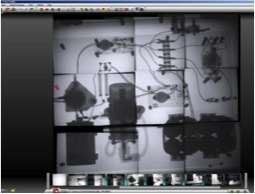
MiniMAX is a compact, completely self-contained, battery-operated, portable, x-ray imaging system.
At just under 5 pounds, MiniMAX outperforms x-ray systems that weigh between 30 and 500 pounds and cost three to six times as much.
The explosives-related application for MiniMAX is homeland security, in particular the postal inspection of suspicious packages and explosive ordnance disposal.
In 2013, Los Alamos National Laboratory received an R&D 100 Award—and an Editor’s Choice Award—from R&D Magazine. Called the “Oscars of Innovation,” the R&D 100 Award recognizes the best and most unique high-technology products of the year.
MiniMAX produced the image above, which shows a large “suitcase” bomb.
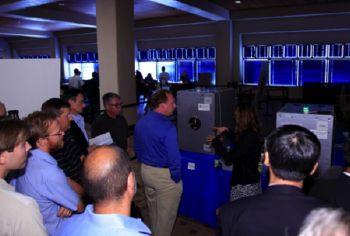
Scientists at Los Alamos National Laboratory have developed a technology known as MagRay, which quickly and accurately differentiates between benign liquids (like fine wine or an energy drink) and liquids that pose a threat, such as esoteric and homemade explosive liquids.
MagRay can perform such a scan in less than 20 seconds and with over 95% accuracy. MagRay is the first instrument of its kind to integrate nuclear magnetic resonance with X-ray.
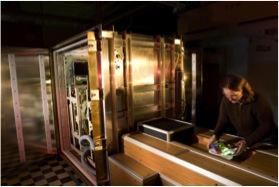
MagViz is the first product based on a new form of magnetic resonance imaging (MRI), a form that uses ultralow magnetic fields.
Like traditional MRI, MagViz identifies chemicals by measuring the magnetic interactions of their protons with the local molecular environment.
However, to measure the proton signal, MagViz uses an applied external magnetic field about 10,000 times weaker than that used with traditional MRI and therefore provides a proton signal whose frequency is 10,000 times lower than traditional MRIs.
This signal is detected using highly sensitive magnetic-field detectors called superconducting quantum-interference devices, or SQUIDs. Traditional MRI uses radio receivers.
MagViz won an R&D 100 Award in 2009.
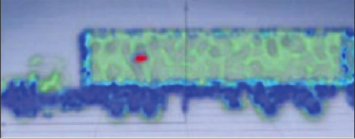
What’s in this truck—goods headed to market or a “dirty” bomb?
In 45 seconds, the Multi-Mode Passive Detection System developed by Decision Sciences and Los Alamos National Laboratory can penetrate any heavy shielding on the truck and tell you precisely what is in it without ever having to open it up.
Decision Sciences has successfully deployed portal monitors that use muon tomography at a major seaport for cargo container scanning, as well as other locations under their licensing agreement.
Also, Decision Sciences and Los Alamos received an R&D 100 Award for the MMPDS in 2013.
Explosive devices take many forms, from various improvised bombs to sophisticated devices used to disperse chemical, biological, or radiological compounds.
A first step toward neutralizing these threats is identification of the nature of the device, preferably from a safe distance. A common goal is 50 meters.
In collaboration with Princeton University, Los Alamos is developing ODD-Ex, a technology that interrogates targets by using a laser. This process excites the molecules of interest, which then give off a signature that can be analyzed.
The challenge is that the hundreds of possible molecules that might be used in explosives must be screened and background signals must be filtered out.
ODD-Ex solves this problem by using femtosecond laser pulses that are shaped so that they excite only the molecules of interest. Signal detection and analysis is done with standard spectrometers.
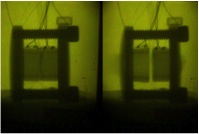
Researchers have gained an understanding of the mechanism of thermal explosions and have created a model capturing the stages of the explosion.
Proton radiography (pRad) at the Los Alamos Neutron Scattering Center imaged thermal explosions at high speeds to provide a real-time look at how an explosion unfolds and releases its energy.
Specifically, it is important to know the range of temperature over which ignition may occur and the subsequent power of the explosion. Scientists have developed triggering techniques that synchronize the thermal ignition of the explosive with a radiographic source, making these studies possible.
Los Alamos is developing and fielding new types of remote-sensing instruments designed to detect spectral or optical signatures of importance in proliferation detection and other applications such as battlefield threats and intelligence gathering.
We use the latest technology in data acquisition and geographical information systems to execute field campaigns with high efficiency and enable the rapid transformation of sensor data to intelligence assessment, in some cases in near real time.
Theoretical research is aimed at developing detection algorithms (for gas chemicals, solid materials, and others) to extract signals from high levels of background clutter, using both conventional techniques based on matched filtering and machine learning methods to improve detection under specialized conditions.
We also make optimal use of chemical and physical intuition to identify new signatures for proliferation activity, which feeds back into instrument design.
Los Alamos has developed and implemented a groundbreaking technology known as VAST, which has innumerable applications that range from manufacturing surety and healthcare diagnostics to explosives detection.
VAST is a deep learning machine vision platform that employs sparsely coded hierarchical and lateral linkages within a neural network modeled on the human neuro-visual system.
Although it has been specifically trained on visual/pixel data in many instances, the VAST platform can be configured for training on any available data set.
The more training data that VAST consumes, the better it becomes at identifying patterns, detecting objects, mitigating risk, and solving problems for its end users.


